You know you should avoid processed foods and sugary treats if you're watching your blood sugar levels, but there are some surprising culprits you should also think twice about.
13 Sneaky Foods That Can Increase Your Blood Sugar
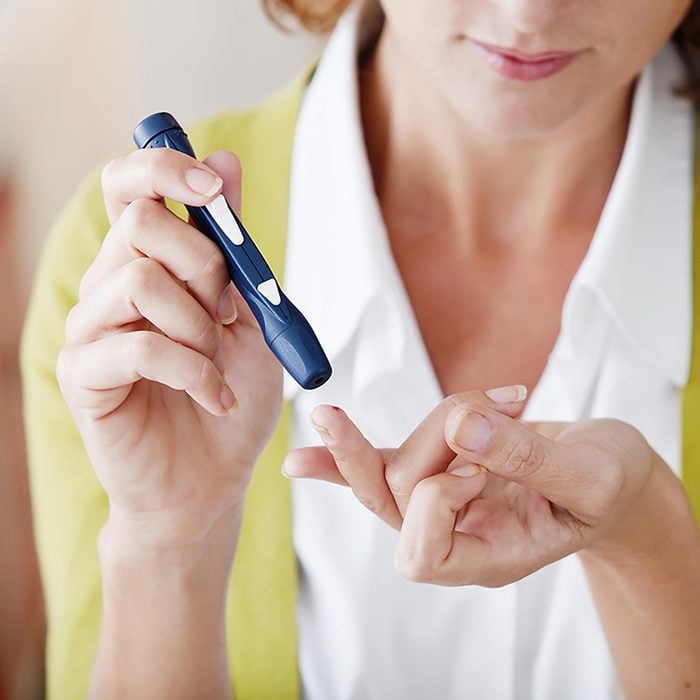
Pay attention to your blood sugar
Maintaining steady blood sugar levels and avoiding spikes (and dips) is critical. “When blood sugar spikes, it sends off a cascade of events that can damage health,” says Erin Palinski-Wade, RD, CDE, author of 2 Day Diabetes Diet. Your body releases excess insulin to force blood sugar into cells. That’s normal, but over time, this can lead to insulin resistance, which leads to blood sugar management problems, she says. Among other problems, you may feel hungrier and store more body fat. Check out 7 ways to maintain healthy blood sugar levels.
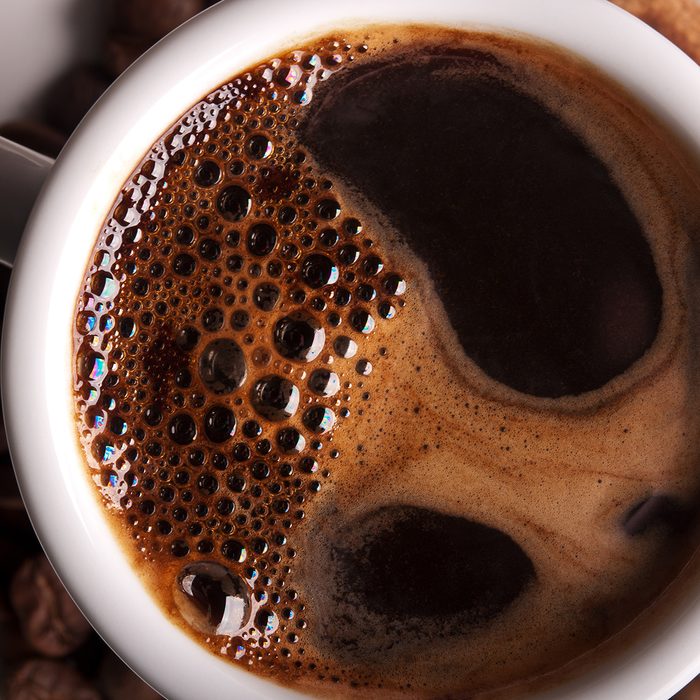
Coffee
Getting your caffeine fix has been shown to buffer the risk of diabetes. In one study in the journal Diabetologia, people who increased their coffee consumption by at least one cup daily saw their risk of type 2 diabetes plummet by 11 percent over a four-year period. However, it’s all about what’s in the coffee that can create a blood sugar problem, says Palinski-Wade. “Adding sweeteners, creamers, and other flavorings can increase the amount of added sugar, causing a rise in blood sugar levels,” she says, adding that for some especially sensitive folks, high amounts of caffeine can also impact blood glucose. It’s best to monitor your blood sugar response after drinking coffee (even black) to know how it affects you.

Instant oatmeal
This is a good general rule: “Eat carbs as close to the natural source—or as minimally processed—as possible,” says Martha McKittrick, RD, CDE, owner of Martha McKittrick Nutrition in New York City. While oatmeal can have a beneficial effect on blood glucose levels, according to research in the journal Nutrients, instant oatmeal is much more processed, and the flavored varieties often contain loads of added sugar. “The more processed something is, the easier it is for the body to break it down and raise blood sugar,” she says. If you want this breakfast favorite, look for the kind that takes a while to soften—steel-cut oats, for example, are a better option. Avoid these habits and other sneaky things that raise blood sugar levels.
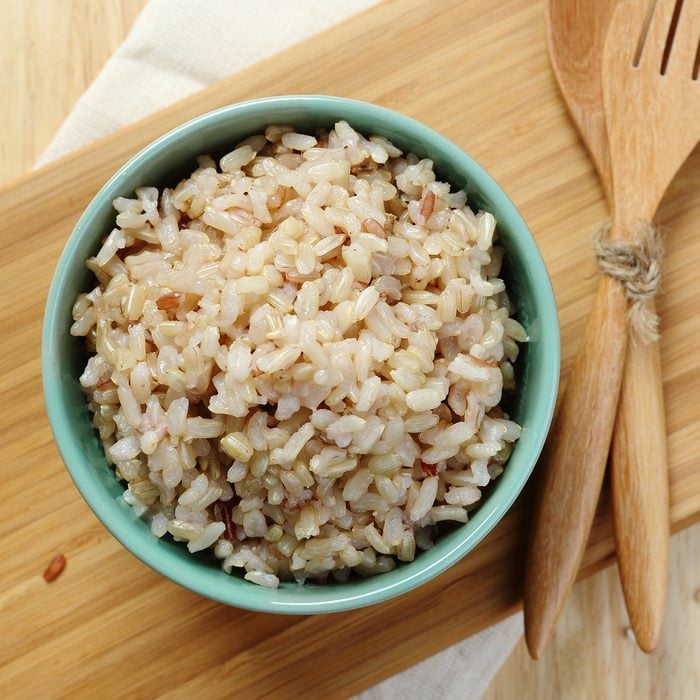
Brown rice
You’ve probably been told to opt for whole grains, like brown rice, over more refined grains, like white rice, since their fiber makes them take longer to digest, mitigating a blood sugar rise. However, you also have to pay attention to the amount of carbohydrates you eat at one sitting, Palinski-Wade warns. “That plays the biggest role in blood sugar management,” she warns. That means a huge serving of whole grains can easily put you over your carb allotment for that meal. One cup of cooked brown rice, for instance, contains 51 grams of carbs on its own—that’s before you tally up other sources in your meal, like vegetables or beans. Palinski-Wade recommends sticking to 30-45 grams or less per meal. Even if the rice is brown, you’re better off limiting yourself to a half cup.
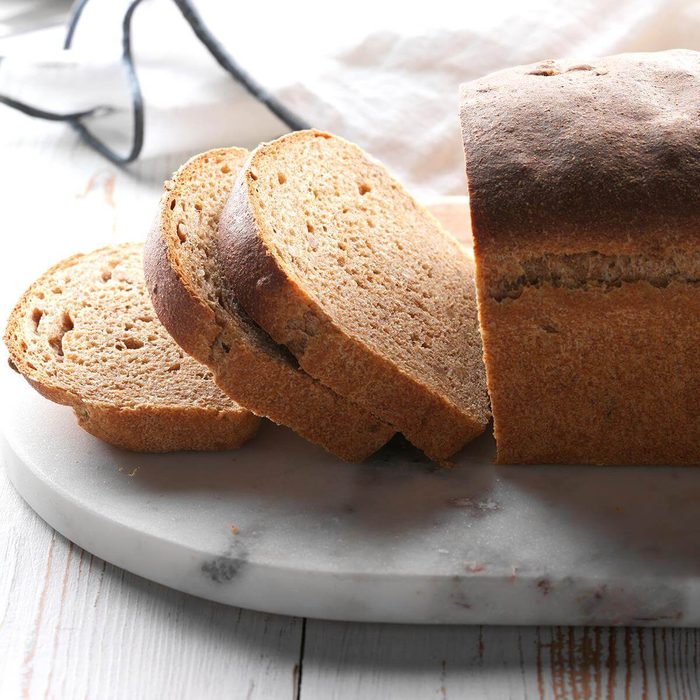
Wheat bread
With so many bread options on store shelves, it’s easy to become swayed by label claims—like brands labeled “wheat” or “made with whole grain.” “This is very different than 100 percent whole grain foods,” says Palinski-Wade. Read the ingredients list and make sure that the first item listed is 100 percent whole grain, she says. Learn about these 15 things diabetes doctors do to keep their own blood sugar in check.

Chinese takeout
You know it’s salty (and maybe even greasy), but it can also be overly sweet. “A combination of the high-fat content, sugar added to the sauce, and white rice is the likely reason why it can cause a blood sugar spike,” says McKittrick.
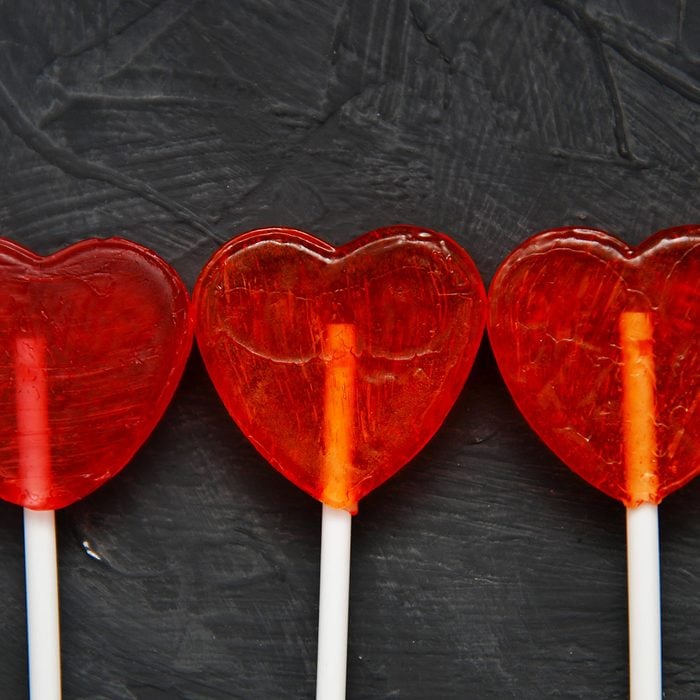
Organic snacks
“Organic” is more label lingo that people tend to believe means 100 percent healthy. “Organic snacks don’t always equate to healthier options. I’ve had clients consuming organic candy, which, although made with organic ingredients, is still candy that’s packed with added sugar,” Palinski-Wade says. Watch for these 7 clear signs you could have high blood sugar.
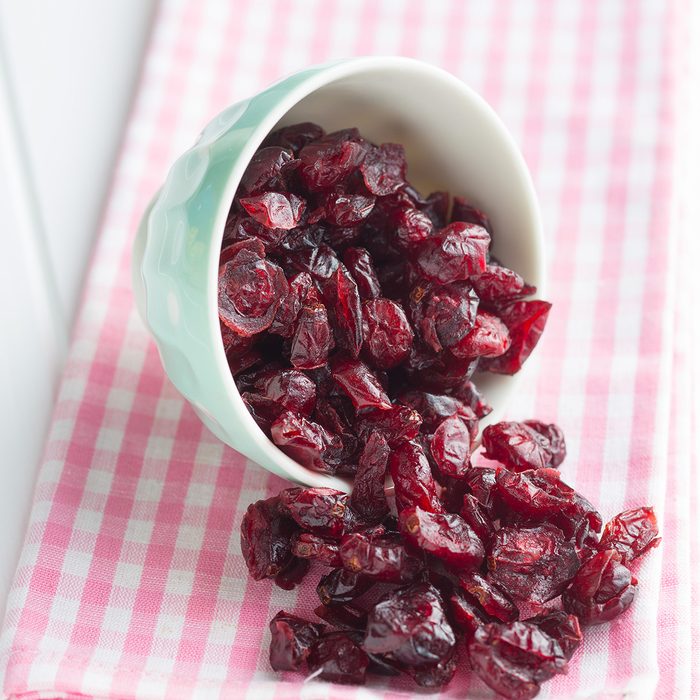
Dried cranberries
Yes, they are fruit, but many brands add sugar to the mix to reduce the berry’s natural tartness. In fact, one popular brand contains nearly 30 grams of total sugar (some of this is coming from the fruit itself) per quarter cup. Choose varieties with no added sugar (read the ingredients list) and eat a portion that’s in line with your goals. As the American Diabetes Association points out, two tablespoons of dried fruit contain 15 grams of carbohydrates.
If you’re looking for sugar alternatives, find out if honey is good for people with diabetes.
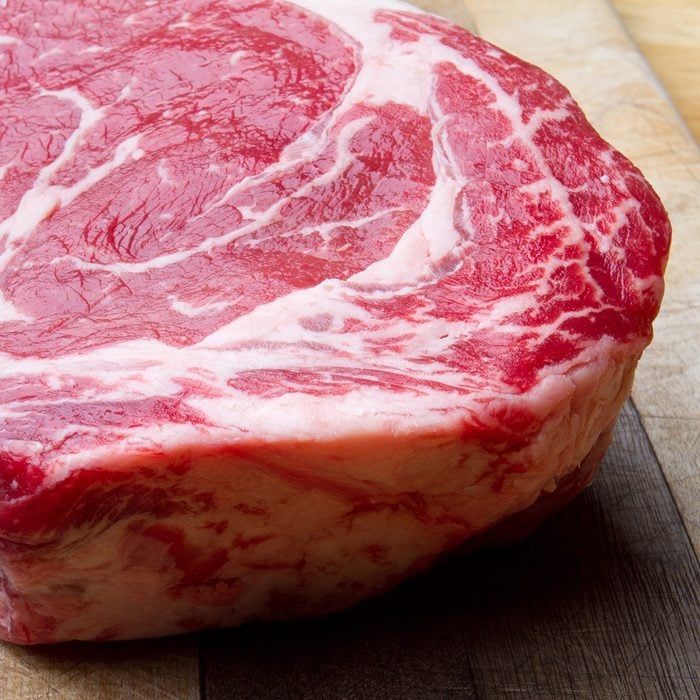
Steak
Many cuts of red meat, like steak, are rich in saturated fat. “High-fat animal proteins provide a large amount of saturated fat, which may make it harder to manage blood sugar levels and contribute to insulin resistance,” says Palinski-Wade. Look for cuts of beef that are considered lean, like “loin” and “round” cuts. Opting for grass-fed, if it fits into your budget, may also offer a heart-healthier fat profile, she says. Enjoy these 15 diabetic foods that not only lower blood sugar levels but also burn fat, reduce inflammation, and more.

Whole wheat pizza
It may be a whole grain, but “the number of carbs in a typical slice can equal three to four slices of bread,” says McKittrick. Ordering thin crust is a good move because it saves carbs, but it still raises blood sugar, she says. Plus, tomato sauce is a sneaky source of sugar too.
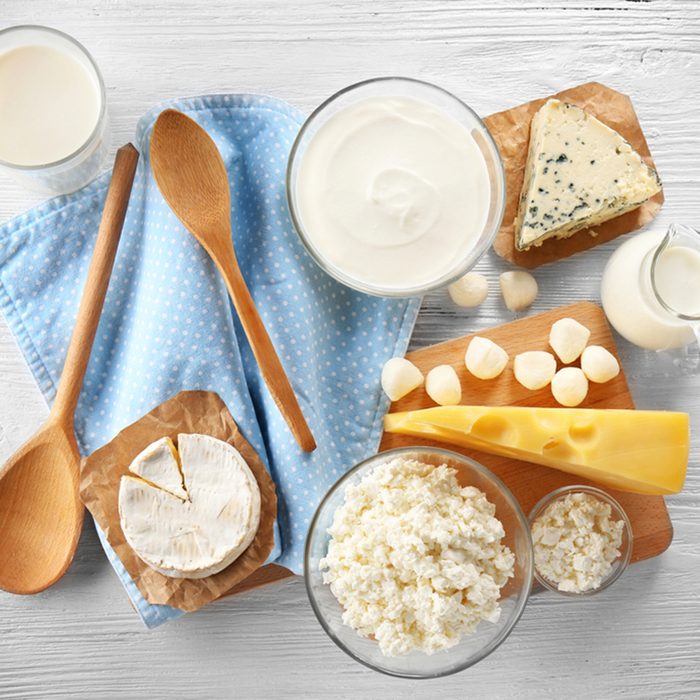
Dairy
While dairy—yogurt, milk, cheese—can offer important sources of calcium and vitamin D, healthy, middle-aged women who eat the highest amounts of milk products are more likely to have insulin resistance than those who eat the least, according to a study in the Journal of Diabetes Research. Dairy may stimulate the production of insulin, thus lowering insulin sensitivity, the researchers suggest. What’s more, the saturated fat in higher-fat dairy may have a negative impact on cardiovascular health, Palinski-Wade says. She recommends consuming low-fat dairy with little to no added sugar. Don’t ignore these 10 silent signs of diabetes.
If you’re prediabetic, make sure these foods aren’t in your prediabetic diet plan.
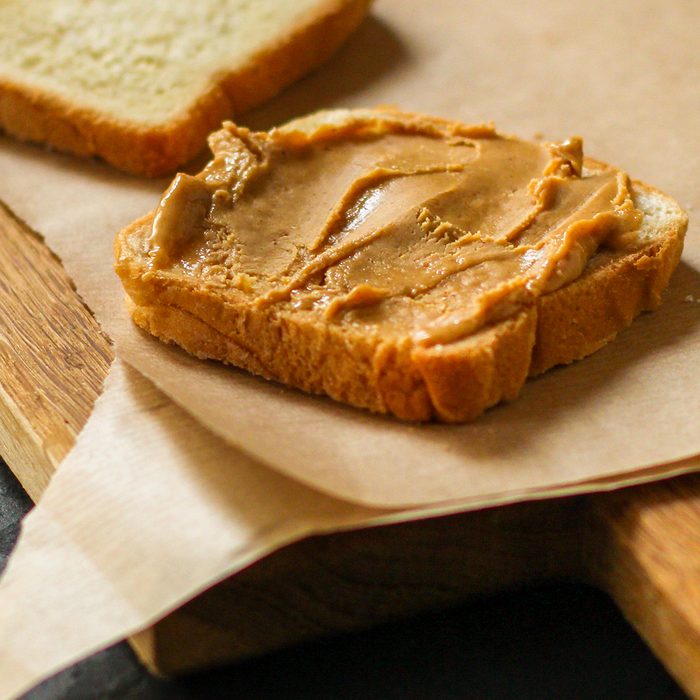
Pick the perfect pairing
Adding healthy fat to foods can slow the rate of digestion and slow your blood sugar response. McKittrick suggests a tablespoon of natural peanut butter on a slice of toast. Fiber acts in the same way. McKittrick likes adding ground flaxseed or chia seeds to yogurt and berry bowl. One caveat: Just as with carbs, fat portions matter, too. “Large amounts of fat added to a meal can actually cause blood sugar levels to stay elevated longer,” she says.
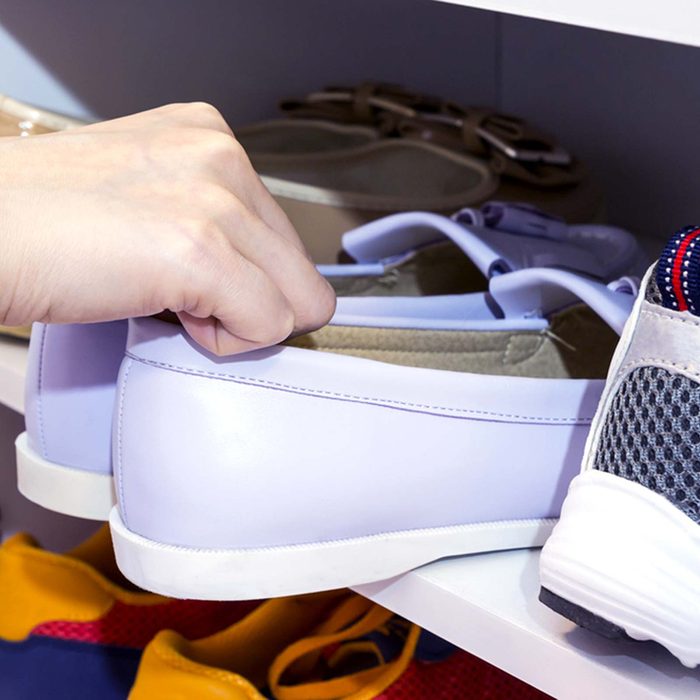
What if your blood sugar is up?
Unfortunately, the best fix isn’t a food fix. “The best thing you can do is move your body,” says Palinski-Wade. “Movement allows your body to quickly use excess sugar for energy, which can help lower blood sugar levels,” she says. Drink plenty of water (to avoid dehydration if you’re urinating a lot) and limit carbohydrates at your next meal, she says. Of course, in the event of a blood sugar spike, connect with your doctor, who will be able to advise you based on your unique health needs. Follow these 12 rules to keep your blood sugar levels steady.